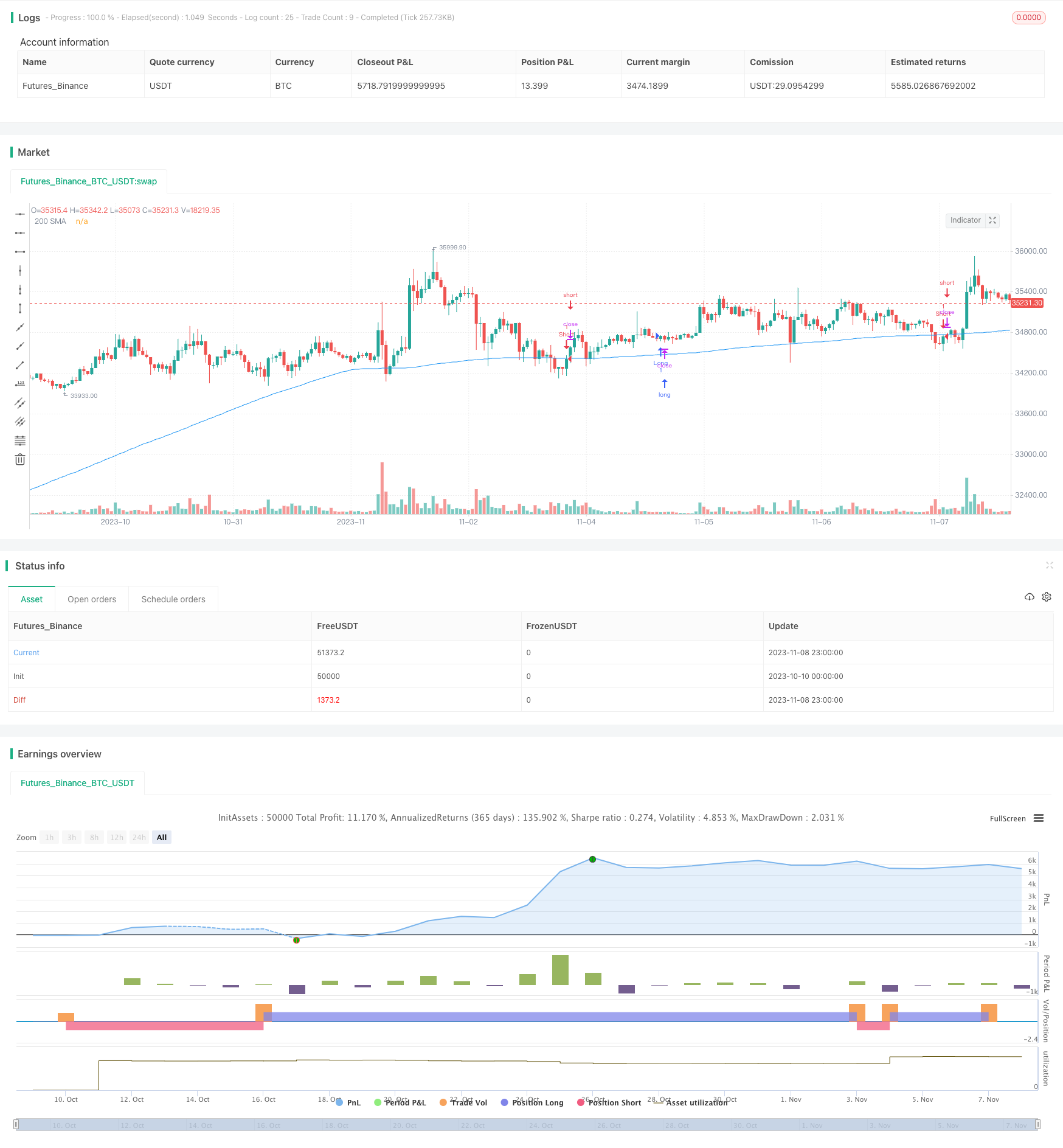
概述
本策略的核心思想是在当日收盘时买入标的,并在次日开盘时卖出,以利用开盘时标的价格的涨幅获利。
策略原理
该策略主要基于两个判断:
日内交易者通常倾向于在开盘时进行买入操作,从而带动开盘时股价的涨幅。
收盘时的标的价格相对更能反映该标的的真实价值。
具体来说,该策略首先在每天收盘时(20:00)判断当日收盘价是否高于200日简单移动平均线,如果高于该平均线,则在收盘时做多;如果收盘价低于该平均线,则在收盘时做空。
在次日开盘时(9:30),如果前一日持有多头头寸,则在开盘时平仓;如果持有空头头寸,则在开盘时平仓。
通过在收盘低价买入,开盘高价卖出的操作,利用开盘股价的涨幅获得收益。
优势分析
该策略主要具有以下优势:
利用日内交易者的惯性思维,即开盘时股价上涨的特点,在开盘时卖出标的获得盈利。
使用200日移动平均线判断价格趋势,有利于把握大趋势进行操作。
操作频率低,每天只有开盘和收盘两个时间点进行判断和交易,降低交易成本。
回测数据充分,利用历史数据判断规则参数的合理性,增加信心。
程序化交易系统执行效率高,避免人为情绪影响交易决策。
风险分析
该策略也存在一定的风险:
开盘价反转的概率存在,如果开盘价向相反方向大幅反转,则会产生损失。
收盘价被人为操纵的可能性,如果收盘价被刻意推高或压低,会影响决策。
标的停牌可能导致无法在开盘平仓,产生损失。
交易成本较高的标的不适合该频率较高的策略。
参数设定不合理可能导致交易频率过高或效果不佳。
对应风险的解决方法包括:
设置止损点,控制最大损失。
采取成交量或复权等手段判断收盘价的可靠性。
优先选择流动性较好的标的。
调整移动平均线参数和开平仓时间提高策略效果。
优化方向
该策略可以通过以下方式进行优化:
在开盘价格出现反转时设置止损或止盈,避免继续亏损。
使用其他指标或模型判断股价的合理区间,避免损失。
考虑标的的流动性风险,优先选择流动性较好的标的。
测试不同的移动平均线参数,寻找最佳参数组合。
优化开平仓时间,考虑提前或延迟一定时间开平仓。
结合当前重大消息面判断收盘价的合理性。
考虑交易成本,筛选交易成本较低的标的。
整合多因子模型,充分考虑各种影响因素。
总结
本策略通过在每日收盘低价买入、次日开盘高价卖出的操作获得收益,利用了开盘涨幅较大的特点。该策略有一定的优势,但也存在一些风险需要注意。通过继续优化参数设定、止损方法、标的选择等,可以获得更好的策略效果。总体来说,本策略为日内交易者提供了一种简单可行的平仓策略思路。
/*backtest
start: 2023-10-10 00:00:00
end: 2023-11-09 00:00:00
period: 1h
basePeriod: 15m
exchanges: [{"eid":"Futures_Binance","currency":"BTC_USDT"}]
*/
// This source code is subject to the terms of the Mozilla Public License 2.0 at https://mozilla.org/MPL/2.0/
// © Youngmoneyinvestments
//@version=5
strategy("End of Day Trading Strategy", overlay=true)
// Get the daily open, high, low, and close prices
daily_open = request.security(syminfo.tickerid, "D", open)
daily_close = request.security(syminfo.tickerid, "D", close)
// Calculate the 200 period SMA on daily close
sma200 = ta.sma(daily_close, 200)
// Define the entry and exit conditions
end_of_day = (hour == 20) and (minute == 0) // Assuming the end of the regular trading hours is 20:00
start_of_day = (hour == 9) and (minute == 30) // Assuming the start of the trading session is 09:30
long_condition = end_of_day and (daily_close > sma200)
short_condition = end_of_day and (daily_close < sma200)
// Execute the strategy logic
if (long_condition)
strategy.entry("Long", strategy.long)
if (short_condition)
strategy.entry("Short", strategy.short)
// Exit conditions
if (strategy.position_size > 0 and start_of_day) // If we are long, sell at the open of the session
strategy.close("Long")
if (strategy.position_size < 0 and start_of_day) // If we are short, buy at the open of the session
strategy.close("Short")
// Plot the SMA on the chart
plot(sma200, "200 SMA", color=color.blue)